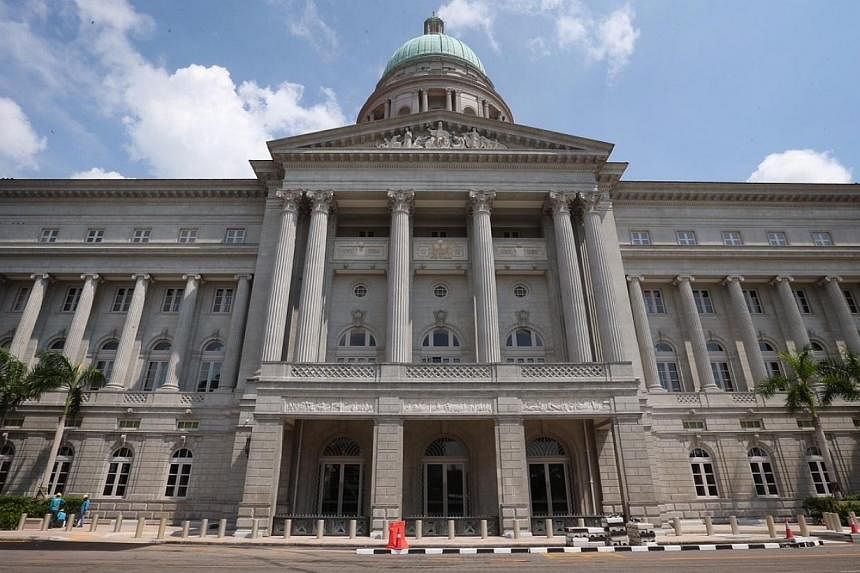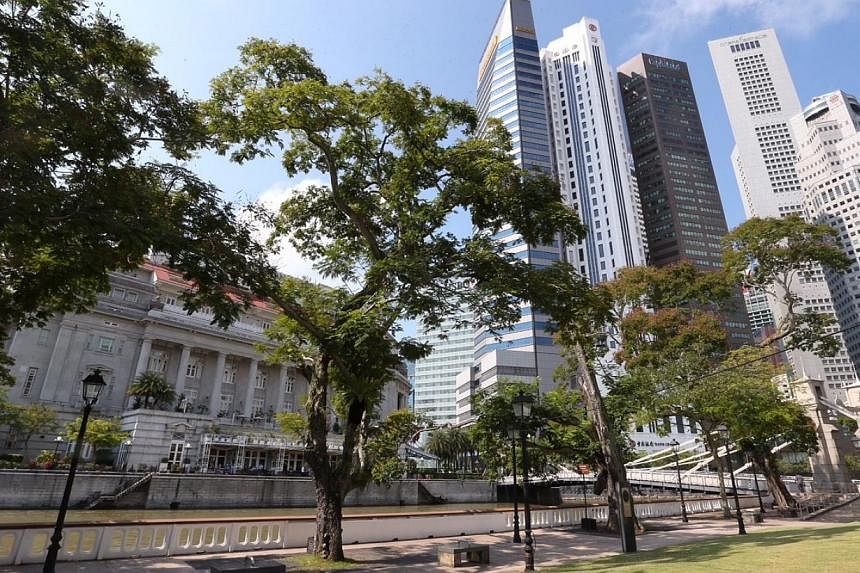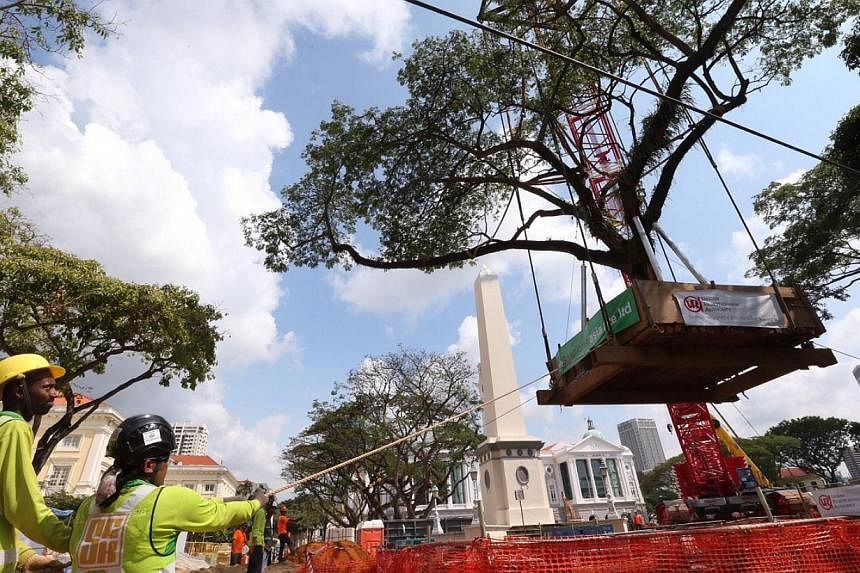SINGAPORE - An eighth raintree was successfully transplanted to a new location in front of the Victoria Theatre on Thursday, further progressing plans to pedestrianise the civic district.
It joins a row of seven other trees on the left of a now empty lawn in front of the theatre, ready to be use for public activities.
The eighth raintree, which weighs 90 tonnes, was the second largest and final tree to be transplanted, in a process that took a total of two weeks to complete.
The transplantation included having the tree pruned before the actual move to minimise stress from water loss.
The National Parks Board (NParks) added that the seven other trees previously transplanted are in good health.
Other works are also underway around the civic district to enhance its greenery, including the installation of structural cells at Queen Elizabeth Walk, over which pavements will be built.

The structural cells which consist of many gaps would allow tree roots to branch out wider without becoming obstructed.
NParks, together with the Urban Redevelopment Authority, are also ensuring the health of mature trees by applying them with biostimulants which, among other benefits, improve soil structure.
Writing in the Ministry of National Development's blog on Thursday morning, National Development Minister Khaw Boon Wan said: "We are putting a lot of thought and passion into the rejuvenation of the Civic District. We want an integrated art, culture and lifestyle precinct set in a lush, green environment."
NParks is also reinstating the five Angsana Trees to the Esplanade Park, at a field commonly known as "gor zhang chiu kar" in Hokkien, or "under the shade of five trees".

The five Angsana trees had to be removed in the 1990s as they were affected by Fusarium wilt, a fungal disease, said Mr Khaw in his blog. This fungus had also killed off many of our mature Angsana trees elsewhere.
"Over the years, (the NParks horticulturists) have specially propagated new Angsana trees that are genetically resistant to Fusarium wilt. Five of these special Angsana trees will be transplanted into Esplanade Park to recreate the old 'gor zhang chiu kar'," he said.
Mr Oh Cheow Sheng, director of Streetscape at NParks said it was a popular meeting place for couples between the 1960s and 1980s. Bringing the Angsana trees back would bring back fond memories for the older generation.
Transplanting mature trees is not easy.
Experts from NParks have to assess if the tree can survive after being uprooted, by looking at its health and how well-established its root system is. They also have to minimise stress placed on the tree when it is moved.
Last year, NParks transplanted 2,100 trees.
Aside from transplanting trees into the Civic District, Mr Khaw said that more volume and colour will also be added to the landscape.
Plants such as Pigeon Orchids and Staghorn ferns will be planted. Old favourites such as the Mussaenda "Queen Sirikit", Gardenias and Frangipani Singapore White will also be re-introduced.

Work is also being done to repave Old Parliament Lane, pave Connaught Drive and create an playground at Esplanade Park.









